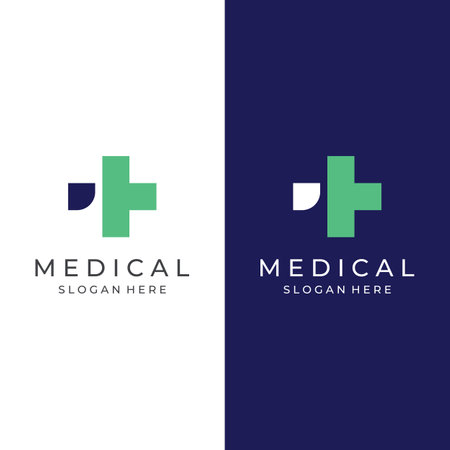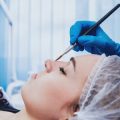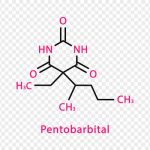1. Understanding the Link Between Dairy and Acne
When it comes to skin health, especially acne, many Americans wonder if what they eat could be making things worse. Dairy products like milk, cheese, and yogurt are a big part of the American diet, but recent research suggests they might play a role in acne development for some people. Let’s break down what scientists and skin experts are saying about dairy and its connection to breakouts.
How Could Dairy Trigger Acne?
Dairy products can influence our skin in a few different ways. Here are the main pathways researchers have identified:
| Dairy Component | Possible Effect on Acne | Explanation |
|---|---|---|
| Hormones (like IGF-1) | Increased breakouts | Dairy naturally contains hormones and can stimulate our own hormone production. This may lead to increased oil (sebum) production and clogged pores. |
| Sugar & Lactose | Worsening inflammation | The sugar in dairy, especially flavored milk or yogurts, can spike blood sugar levels. This can cause inflammation, which is linked to more severe acne. |
| Proteins (casein & whey) | Pore-clogging effects | Certain proteins in milk might boost insulin levels or trigger inflammation, both of which can make acne worse. |
What Does the Research Say?
Multiple studies have found a possible link between drinking milk (especially skim milk) and higher rates of acne among teens and young adults. However, not everyone who consumes dairy will experience skin problems. Genetics, overall diet, stress, and skincare habits all matter too.
Expert Opinions from U.S. Dermatologists
- Moderation is key: Most dermatologists agree that you don’t need to cut out dairy completely unless you notice it triggers your breakouts.
- Individual response matters: Some people are more sensitive to dairy than others. Try tracking your diet and skin changes to find patterns.
- Look for hidden sources: Cheese, ice cream, coffee creamers, and protein powders often contain dairy proteins that could affect your skin.
The Takeaway for Americans Concerned About Acne
If you’re struggling with acne and suspect dairy might be a factor, consider making small changes—like switching to non-dairy alternatives or reducing your intake—to see if your skin improves over time. Keep in mind that everyone’s body is different, so what works for one person may not work for another.
2. Types of Dairy and Their Effects on Skin
Understanding Different Dairy Products
When talking about dairy and acne, it’s important to remember that not all dairy products are the same. Milk, cheese, and yogurt are common in American diets, but they each affect your skin differently. Let’s break down how these popular dairy options might impact acne and skin health.
How Milk, Cheese, and Yogurt Compare
| Dairy Product | Main Ingredients | Common Forms | Potential Impact on Skin |
|---|---|---|---|
| Milk | Cows milk (whole, low-fat, skim) | Drinks, cereals, smoothies | Can increase insulin-like growth factor 1 (IGF-1), which may trigger more oil production and clogged pores. Skim milk is often linked with higher rates of acne compared to whole milk. |
| Cheese | Cows or goats milk (aged or processed) | Slices, shredded, melted in dishes | Tends to be less associated with acne than liquid milk. However, processed cheeses can contain added hormones or preservatives that might irritate sensitive skin. |
| Yogurt | Cultured milk (with probiotics) | Plain, flavored, Greek style | Probiotics in yogurt may help balance gut bacteria and reduce inflammation. Unsweetened or Greek yogurt is usually gentler on the skin than sugary varieties. |
The Role of Hormones and Processing
Dairy from conventionally raised cows in the U.S. can contain natural and added hormones. These hormones may play a role in stimulating excess oil production and increasing the risk of breakouts for some people. Skim milk especially has been studied for its stronger association with acne, possibly because of the way it’s processed and the extra proteins added for texture.
Quick Tips:
- If you notice breakouts after drinking regular milk, try swapping for unsweetened plant-based milks like almond or oat.
- Choose plain or Greek yogurt with live cultures instead of sweetened options to support gut health without extra sugar.
- If you enjoy cheese, opt for minimally processed types made from whole milk for fewer additives.
This breakdown can help you make better choices if you’re concerned about dairy’s effect on your skin. Everyone’s body reacts differently, so tracking your own skin responses to various dairy products is a helpful way to find what works best for you.
![]()
3. Cultural Perspectives: Dairy Consumption in the U.S.
Dairy is a big part of American life and has been for generations. From the classic glass of milk at breakfast to cheese on burgers and pizza, dairy products are everywhere in the U.S. But how people view and use dairy can affect not just their diets, but also their approach to skin care—especially when it comes to acne.
How Dairy Is Viewed in American Culture
In the United States, dairy is often seen as healthy and essential, especially for children. “Milk builds strong bones” is a message many Americans grow up hearing. It’s common for families to stock their fridges with milk, yogurt, and cheese, believing these foods support overall health.
Dairy Marketing in the U.S.
Dairy companies spend millions on advertising every year. Campaigns like “Got Milk?” make dairy feel like a must-have for everyone. These ads usually show athletes or celebrities with milk mustaches, linking dairy to strength, beauty, and success.
| Dairy Product | Common Usage in the U.S. | Typical Marketing Message |
|---|---|---|
| Milk | Drunk with meals, used in cereal or coffee | Essential for growth and bone health |
| Cheese | Burgers, pizza, sandwiches, snacks | Tasty addition to almost any meal |
| Yogurt | Breakfast food, snack, smoothie base | Good for digestion and probiotics |
| Ice Cream | Dessert or treat | A fun way to enjoy dairy |
The Influence on Skin Care Behaviors and Beliefs
Because dairy is so normal in American diets, most people dont think twice about how it could affect their skin. Many Americans only start questioning dairy when they notice breakouts or hear about possible links between dairy and acne from friends or online sources. Even then, there’s still a lot of debate—some believe giving up milk will clear their skin, while others don’t see any connection.
Cultural Attitudes Toward Cutting Out Dairy for Acne
In recent years, more people have become open to trying plant-based milks or cutting back on cheese if they think it might help their skin. However, because dairy is such a familiar comfort food in the U.S., making this change isn’t always easy or popular. There’s still social pressure at family dinners or parties where pizza and ice cream are served. Plus, some worry about missing out on calcium or other nutrients if they skip dairy altogether.
4. Alternative Solutions to Dairy for Clearer Skin
Exploring Non-Dairy Options
If you’re noticing more breakouts and suspect dairy might be a trigger, you’re not alone. Many Americans are making the switch to non-dairy alternatives to help improve their skin health. Luckily, there are plenty of tasty and nutritious options to choose from, so you don’t have to feel like you’re missing out.
Popular Plant-Based Milk Alternatives
Plant-based milks are everywhere now, from your local grocery store to your favorite coffee shop. These alternatives can help you cut back on dairy without sacrificing flavor or nutrition. Here’s a quick comparison of some common choices:
| Type | Main Ingredient | Taste Profile | Key Nutrients | Best For |
|---|---|---|---|---|
| Almond Milk | Almonds | Light, nutty | Vitamin E, low calories | Cereal, smoothies, coffee |
| Soy Milk | Soybeans | Creamy, mild | Protein, calcium (fortified) | Baking, lattes, protein shakes |
| Oat Milk | Oats | Slightly sweet, creamy | Fiber, B vitamins (fortified) | Coffee drinks, cereal, baking |
| Coconut Milk | Coconut meat/water | Tropical, rich | MCTs (healthy fats) | Desserts, curries, smoothies |
| Rice Milk | Rice grains | Mild, slightly sweet | Carbohydrates (easy to digest) | Lactose-intolerant individuals, kids’ snacks |
| Cashew Milk | Cashews | Creamy, subtle nut flavor | Healthy fats (low in protein) | Sauces, coffee creamers, soups |
Lactose-Free Dairy Options
If you still want the taste and texture of real milk but struggle with breakouts or digestive issues from lactose, lactose-free dairy products are a smart pick. These are made from real cow’s milk but with the lactose removed. They deliver the same calcium and protein as regular milk but are easier on your stomach and less likely to trigger skin problems for many people.
Lactose-Free Choices Include:
- Lactose-free cow’s milk (found in most grocery stores)
- Lactose-free cheese (like cheddar or mozzarella)
- Lactose-free yogurt (plain or flavored)
Other Non-Dairy Substitutes for Daily Use
Dairy isn’t just about milk—think about butter, yogurt, ice cream, and cheese too! Thankfully, there are plenty of non-dairy swaps available today.
- Dairy-Free Yogurt: Made from coconut, almond, soy, or cashews. Great for breakfast bowls or parfaits.
- Dairy-Free Cheese: Plant-based cheeses made from nuts or soy that melt well on pizza or sandwiches.
- Dairy-Free Butter: Vegan spreads made from avocado oil or olive oil work well for cooking and baking.
- Dairy-Free Ice Cream: Coconut milk and oat milk varieties are super creamy and come in lots of flavors.
Tips for a Smooth Transition Away From Dairy
- Try different brands—flavors and textures can vary!
- Add plant-based milks gradually to your favorite recipes.
- Check labels for added sugars or unnecessary additives.
With so many delicious alternatives available in the US today, finding non-dairy options that fit your taste buds and lifestyle is easier than ever—and may just be the change your skin needs.
5. Dietary Tips and Lifestyle Changes for Managing Acne
Understanding the Link Between Diet, Dairy, and Acne
Many studies have shown that what you eat can play a role in how your skin looks and feels. In particular, dairy products like milk, cheese, and ice cream may be connected to acne breakouts for some people. If you notice more pimples after eating or drinking dairy, it might be worth considering some simple changes to your diet and lifestyle.
Actionable Dietary Tips for Healthier Skin
1. Try Dairy Alternatives
If you suspect dairy is making your acne worse, try switching to non-dairy options. Plant-based milks such as almond, oat, soy, or coconut milk are easy to find at most American grocery stores and can be used in cereal, coffee, and cooking.
| Dairy Product | Suggested Alternative |
|---|---|
| Cow’s Milk | Almond Milk, Oat Milk, Soy Milk |
| Cheese | Vegan Cheese (nut-based or soy-based) |
| Yogurt | Coconut Yogurt, Almond Yogurt |
| Ice Cream | Dairy-Free Ice Cream (made with cashew, coconut, or oat milk) |
2. Eat More Whole Foods
A diet rich in fresh fruits, vegetables, whole grains, lean proteins, and healthy fats can help support clearer skin. Foods high in antioxidants and vitamins—like berries, spinach, salmon, and avocados—may reduce inflammation that leads to breakouts.
3. Watch Your Sugar Intake
Sugary snacks and drinks can spike blood sugar levels and may trigger acne for some people. Try swapping soda for water or sparkling water with lemon and limit processed foods like cookies and chips.
Lifestyle Habits That Support Clear Skin
1. Keep a Food Diary
If you’re not sure which foods affect your skin, keep a diary of what you eat and any changes in your acne. This can help you spot patterns over time.
2. Practice Good Skin Hygiene
Wash your face twice daily with a gentle cleanser, especially after sweating or working out. Avoid harsh scrubs that can irritate the skin.
3. Manage Stress Levels
Stress can make acne worse by increasing inflammation in the body. Consider activities like yoga, meditation, or regular exercise to keep stress in check.
Quick Reference Table: Daily Habits for Healthier Skin
| Habit | Easy Tip for Americans |
|---|---|
| Avoid Dairy If Sensitive | Choose plant-based milks at Starbucks or grocery stores |
| Eat More Vegetables & Fruits | Add a side salad or fruit cup to fast food meals |
| Stay Hydrated | Carry a reusable water bottle throughout the day |
| Mild Cleansing Routine | Select fragrance-free facial cleansers at drugstores like CVS or Walgreens |
| Reduce Stress Daily | Take a short walk outdoors after work or school |
By making these simple dietary swaps and adopting healthier daily habits, many Americans have found improvements in their skin health. Remember, everyone’s skin is unique—so feel free to experiment gently to see what works best for you.


